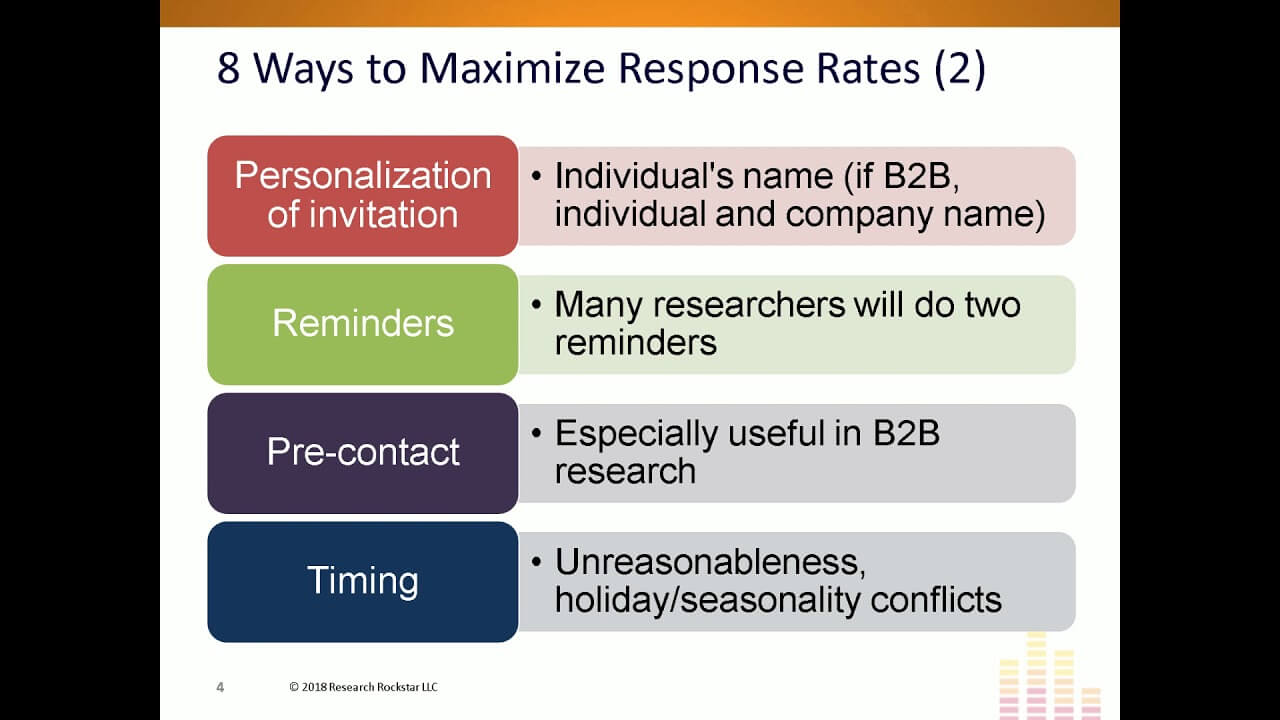New market research methods are great—but I also still value the tried and true. Survey research, for one, is still very important (especially for populations and research goals that can’t be well-served by transactional data, 3rd party data, etc.). And luckily, we have more information (research on research) than ever about how to maximize survey data quality.
While there are several factors that influence survey data quality, one seems often neglected: maximizing response rates. Market research survey response rates have gone from bad-to-worse over the years, and it can be tempting to adopt an “it is what it is” attitude. But we can do better. The good news is that there are many known levers we can pull to improve survey response rates. And yes, “incentives” is certainly one of them: but can you think of 7 more? If not, please enjoy this video podcast conversation for our full list of 8 ways to boost your survey response rates. And as mentioned in the podcast, see the related research compendium on email invitation attributes.
For those of you who may be newer to market research, you might ask, “what is the response rate for a given survey project?” Here’s a simple example for email surveys: if you email out 1,100 survey invitations and 100 bounce back due to bad addresses/being non-deliverable, and 250 respond, your response rate is 250/1000= 25%. And wouldn’t THAT be nice! You might get that for employee surveys or highly engaged customer surveys, but otherwise, it’s pretty rare.
Please share this video with any colleagues who might want to learn more ways to boost survey response rates. And if you think the video has value, please do like and subscribe on YouTube! Prefer podcasts? Also available on iTunes.










